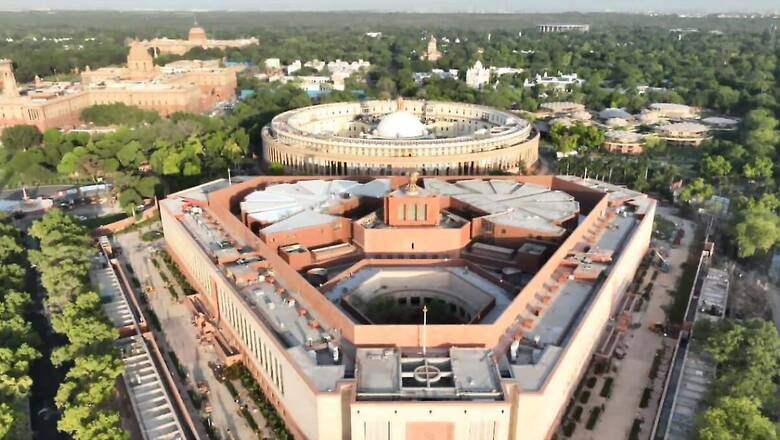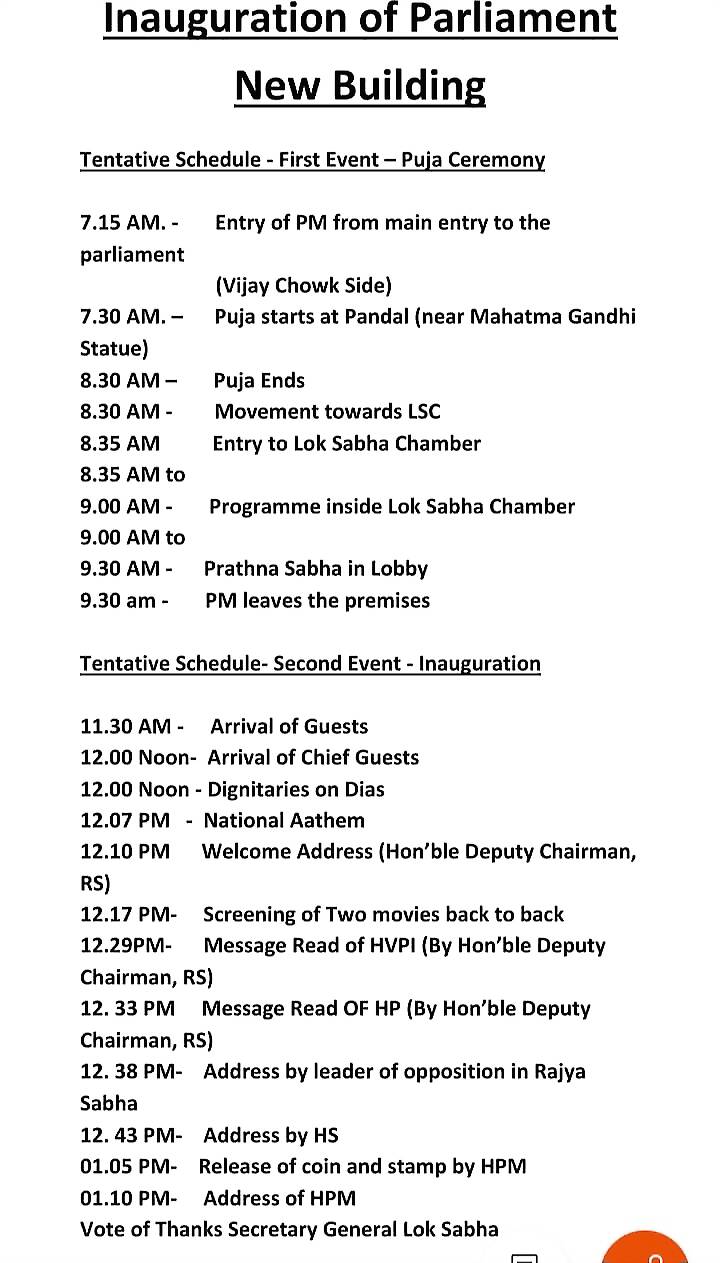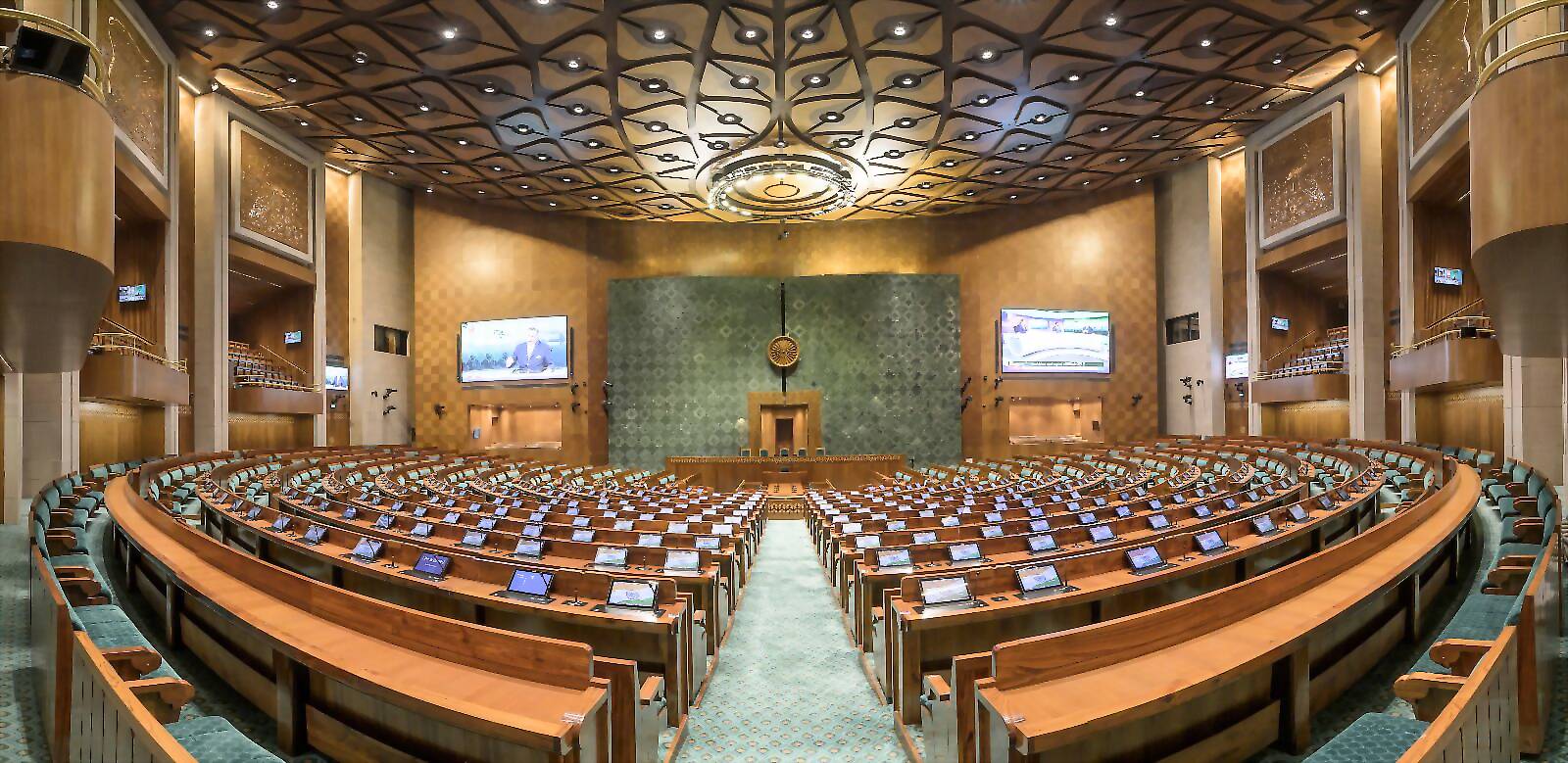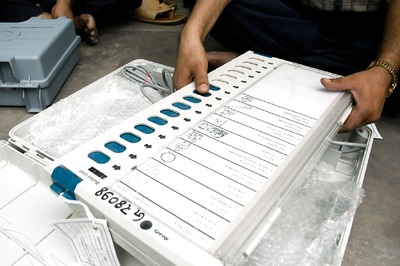
views
Notwithstanding a boycott from 20 opposition parties, Prime Minister Narendra Modi is all set to inaugurate the new Parliament building on Sunday. The ruling BJP made it clear on Saturday that there will be no stopping the historic event, even as a feverish debate raged over the inaugural ceremony with the opposition insisting President Droupadi Murmu, as head of the state, should do the honours.
As a preview of sorts, the prime minister shared how people were “emotional” over getting a new Parliament, which represented the myriad cultures as well as the spirit of ‘Ek Bharat, Shreshtha Bharat’. Describing the new building as a “temple of democracy”, he wished that it strengthened India’s development trajectory and empowered millions.
Prime Minister Modi urged people to share a video of the new building on Twitter with #MyParliamentMyPride. He also retweeted several public posts with the video and their voiceovers. The video gives a virtual tour of the new building, including the Lok Sabha and Rajya Sabha.
With carpets from Mirzapur in Uttar Pradesh, bamboo flooring from Agartala in Tripura and stone carvings from Rajasthan, the new Parliament building reflects India’s diversity. ‘Sengol’, a historical sceptre from Tamil Nadu first received by then PM Jawaharlal Nehru to represent transfer of power from the British, will be installed in the new Parliament building.
On the eve of the inaugural ceremony, the PM met Adheenams at his residence and took their blessings. He spoke of the cultural and historical significance of ‘Sengol’, which was handed over to him by the Shaivite seers from Tamil Nadu.
Union home minister Amit Shah shared pictures of the state-of-the-art new Parliament building on Twitter, calling it an “architectural marvel”. He tweeted: “The New Parliament building is an architectural marvel that represents the resolve of 1.4 billion Indians to build a new nation under the leadership of PM @narendramodi Ji. #MyParliamentMyPride”
Here is all you need to know about the inauguration tomorrow (May 28):
Who are the attendees?
As many as 25 parties are expected to attend the inauguration. Former vice-president M Venkaiah Naidu, Lok Sabha speaker Om Birla, former PM HD Deve Gowda and Rajya Sabha deputy chairman Harivansh among others are expected to be present during the formal inauguration of the new complex. The BJP has issued specific instructions for its MPs with regard to attendance at some other events before the main event, as it is also the 140th birth anniversary of Hindutva ideologue VD Savarkar. They have also been asked to attend the ‘Mann Ki Baat’ programme.

What will happen at the ceremony?
The ceremony will begin with an early morning havan and a multi-religion prayer followed by a formal opening in the Lok Sabha by Modi. Officials said the havan will be held outside the new building around 7 am.
The Centre will also issue a commemorative Rs 75 coin. According to a gazette notification by department of economic affairs under the finance ministry, the weight of this coin could be 34.65 to 35.35 grams. On one side will be an image of Lion Capital of Ashoka Pillar in the centre flanked by the word ‘Bharat’ in Devanagri script and ‘INDIA’ in English. The INR symbol and denominational value ’75’ in international numeral will also be inscribed below the Lion Capital. The other side of the coin shall bear the image of Parliament Complex, and the year ‘2023’ in international numeral below the image.
What are the security and traffic arrangements?
Security has been stepped up in central Delhi, better known as Lutyens. Since the elaborate ceremony will be attended by many eminent personalities, police have already issued a traffic advisory stating that the New Delhi district will be treated as a controlled area and entry of vehicles will be restricted.
The Parliament building is already located in a high-security area. Besides additional deployment, there is continuous monitoring through CCTV cameras. A police official said adequate security personnel have been deployed but refused to go into details.
Police pickets have been set up in central Delhi and tight security arrangements are in place to maintain law and order. Security has also been enhanced along the border entry points. “Pickets will be installed and police will check the vehicles entering from borders,” another official said.
According to the traffic advisory, only public transport vehicles, civil service aspirants, bonafide residents, labelled vehicles and emergency vehicles will be allowed to move in the New Delhi area. Noting that many VVIPs and other dignitaries are likely to attend the inauguration ceremony, the Delhi traffic police urged people to plan their journey accordingly and avoid the New Delhi district from 5.30 am to 3 pm.
What are the features of the new building?
Modi had laid the foundation stone of the new parliament building on December 10, 2020. It is a triangular-shaped four-storey building with a built-up area of 64,500 sq m. It has three main gates — Gyan Dwar, Shakti Dwar, and Karma Dwar. It will have separate entrances for VIPs, MPs, and visitors.

With carpets from Mirzapur in Uttar Pradesh, bamboo flooring from Tripura and stone carvings from Rajasthan, the building has material acquired from various parts of the country. ‘Sengol’, which was handed over to Modi by Adheenam seers, will be placed near the chair of Lok Sabha speaker in the house chamber.
Constructed by Tata Projects Ltd, the building will have a grand constitution hall to showcase India’s democratic heritage, a lounge for MPs, a library, multiple committee rooms, dining areas and ample parking space. The building can comfortably seat 888 members in the Lok Sabha chamber and 300 in the Rajya Sabha chamber. In case of a joint sitting of both the Houses, a total of 1,280 members can be accommodated in the lower house.
The teakwood was sourced from Nagpur in Maharashtra, while the red and white sandstone was procured from Sarmathura in Rajasthan. The Kesharia green stone has been procured from Udaipur, the red granite from Lakha near Ajmer and the white marble from Ambaji in Rajasthan.

The steel structure for the false ceilings in the Lok Sabha and the Rajya Sabha have been sourced from Daman and Diu, while the furniture in the new building was crafted in Mumbai. The stone ‘jaali’ (lattice) works were sourced from Rajnagar in Rajasthan and Noida in Uttar Pradesh. The materials for the Ashoka Emblem were sourced from Aurangabad in Maharashtra and Jaipur in Rajasthan, while the Ashok Chakra donning the massive walls of the two houses as well as exteriors were brought in from Indore in Madhya Pradesh.
Manufactured sand or M-sand from Charkhi Dadri in Haryana has been used for creating concrete mix for the construction activities. It is considered environment-friendly as it is manufactured by crushing large hard stones or granite and not by dredging river beds. The fly ash bricks used in construction were sourced from Haryana and Uttar Pradesh, while brass works and pre-cast trenches were from Ahmedabad in Gujarat.
(With PTI inputs)




















Comments
0 comment